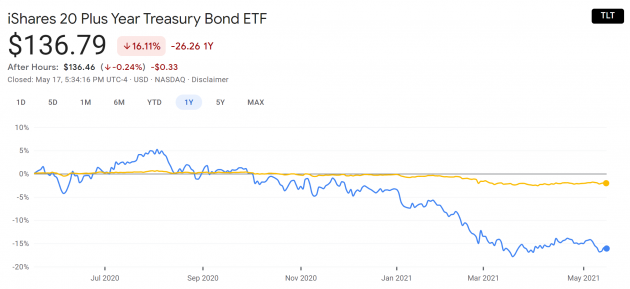May 18, 2021
US INFLATION RISES TO 13-YEAR HIGH
Recent headlines are all about the rise of inflation, and I don’t expect it to stop anytime soon. Here are just a few headlines from the last 24 hours.
- https://www.wsj.com/articles/inflations-magic-number-is-four-11621355006
- https://www.bloomberg.com/news/articles/2021-05-17/inflation-rate-2021-and-shortages-companies-panic-buying-as-supplies-run-short
- https://www.ft.com/content/9935be40-d041-4b7d-acac-4d86f3c25100
- https://finance.yahoo.com/video/going-see-higher-inflation-numbers-192846353.html
- https://finance.yahoo.com/news/home-depot-q-1-sales-and-profits-lifted-by-skyrocketing-inflation-182424800.html
It seems the nonstop monetary stimulus, which accelerated during the pandemic, has finally caught up with us. Recent data confirm the U.S. rate of inflation rose to its highest level – 4.2% annualized – in almost 13 years. Federal Reserve economists believe that an arbitrary target of 2% inflation is optimal.
Stock market investors fear inflation because, when rising too rapidly, inflation can force the Federal Reserve to hike rates and, in some cases, prick asset bubbles. At the same time, bond investors fear erosion of their future purchasing power.
DURATION RISK
The duration risk of a bond (or bond fund) refers to its price sensitivity to changes in interest rates. Falling interest rates benefit bond investors by increasing bond prices. This effect is more pronounced in high duration bonds but can cut both ways – rising interest rates hurt bond investors, with high duration bonds suffering to a greater degree.
Out of a concern for rising interest rates, I took the step in the first half of 2020 to reduce our duration risk. We reduced our allocation to the 20+ Year Treasury Bond ETF (NASDAQ: TLT) by 50% and introduced, in its place, the 3-7 Year Treasury Bond ETF (NASDAQ: IEI). In this case, the move turned out to be a wise one. Since last May, rising interest rates have resulted in a 16% decline in the 20+ Year Treasury Bond. The intermediate fund, on the other hand, has declined only a few percentage points.
High duration products can be a useful component of one’s portfolio, particularly during deflationary shocks. For now, however, I plan to stick with the current allocation until the inflation outlook changes.


